This post may contain affiliate links. Please read our disclosure policy.
How to make carrot juice in a blender or juicer for delicious, nutrient-packed homemade carrot juice. All you need are carrots for a sugar-free juice that can be consumed alone or as part of a mixed juice. Plus, this recipe is zero waste – with methods to use the remaining pulp and carrot tops!
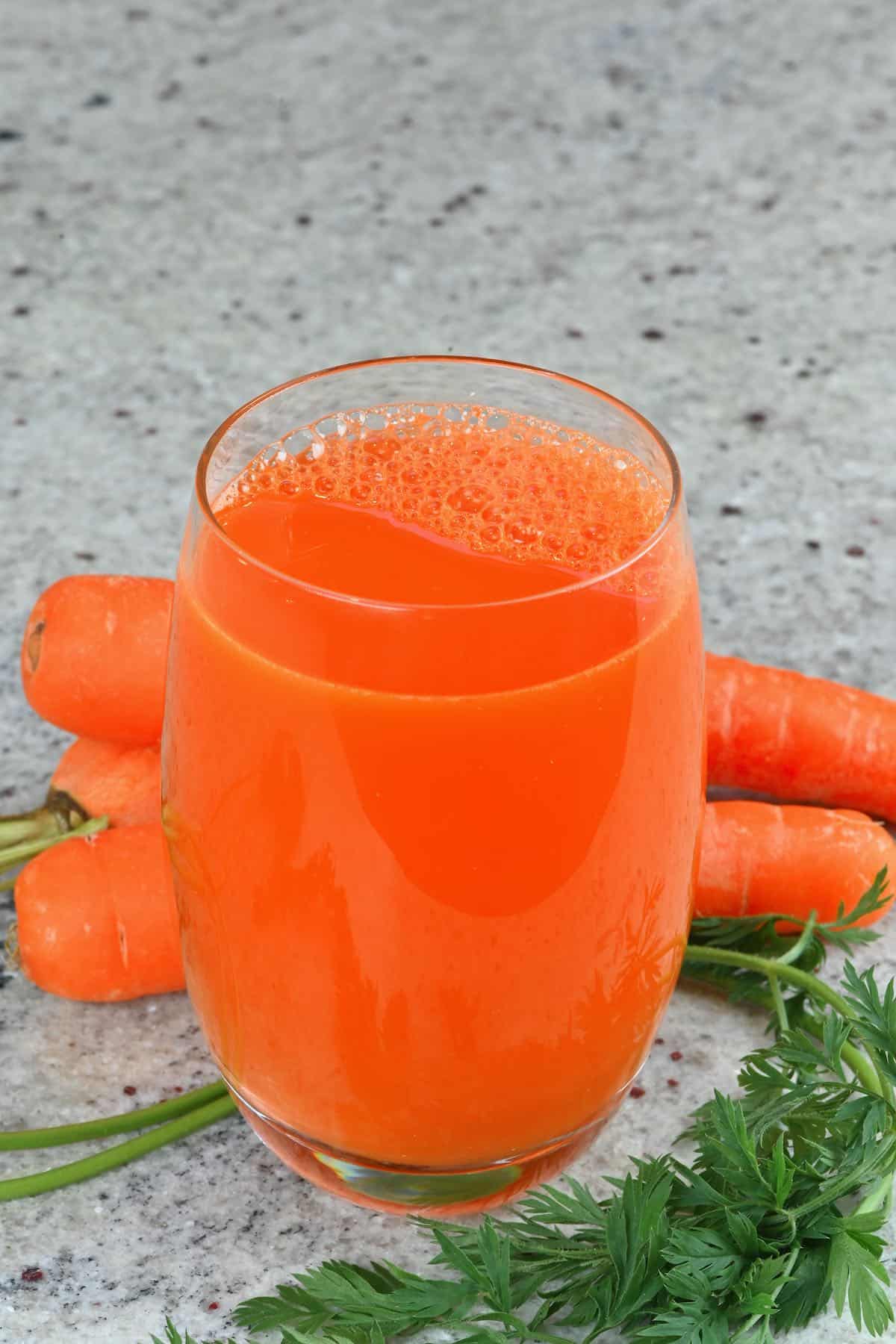
I’ve spent a lot of time focusing on building up my immune system through my diet and lifestyle. One simple method I’ve found for consuming large amounts of essential nutrients is through fruit and vegetable juices.
As much as I love to eat carrots (especially with lots of homemade hummus), I’ve really enjoyed adding juices and shots into my diet over the past couple of years. Even better, there are two methods to make this homemade carrot juice!
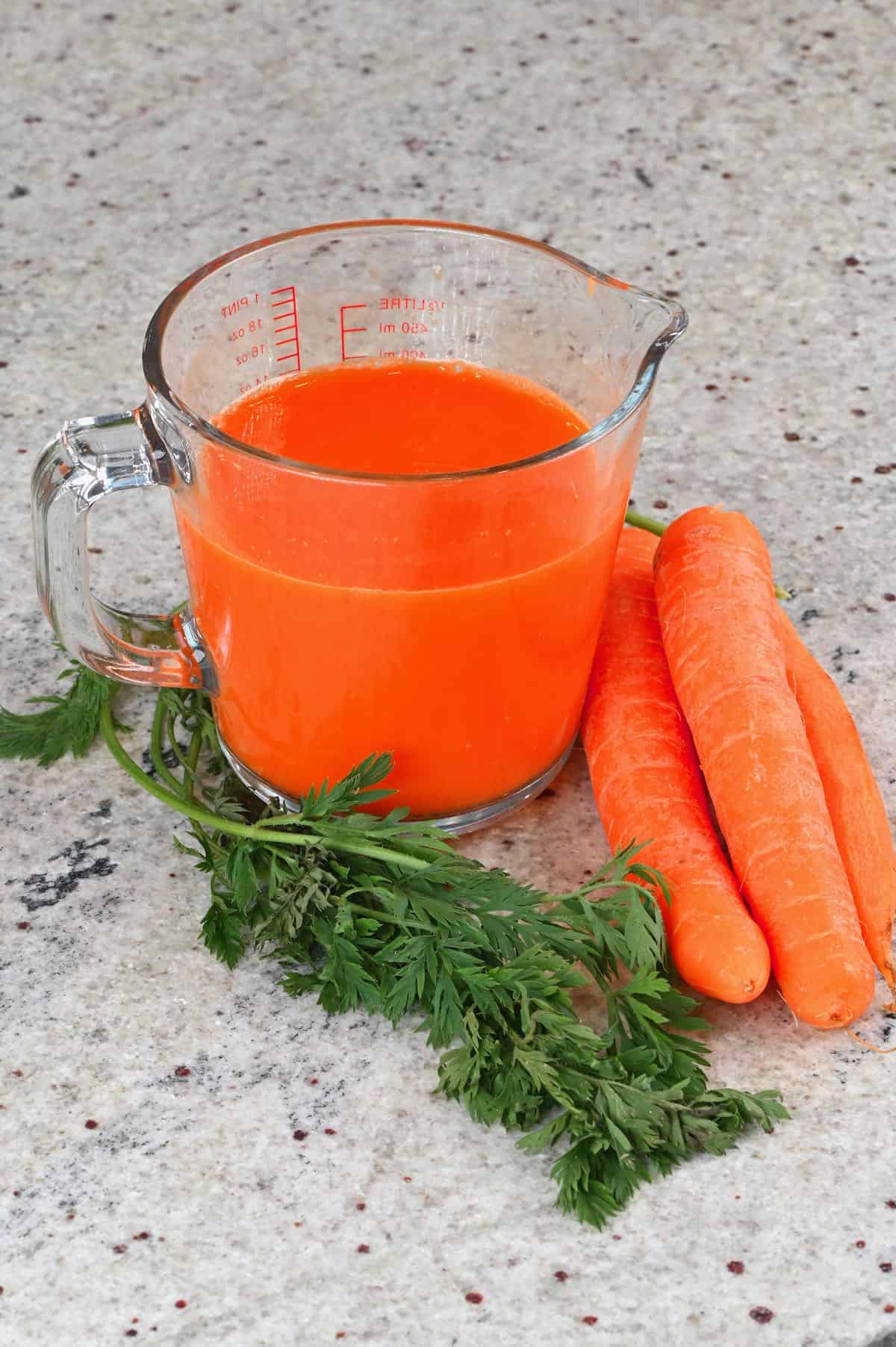
Want to save this recipe?
How to juice carrots
With A Juicer
First scrub/clean the outside of your carrots well. If you’re using organic carrots you can leave them unpeeled, otherwise peel them – though, either way, peeled carrot juice will be brighter and sweeter.
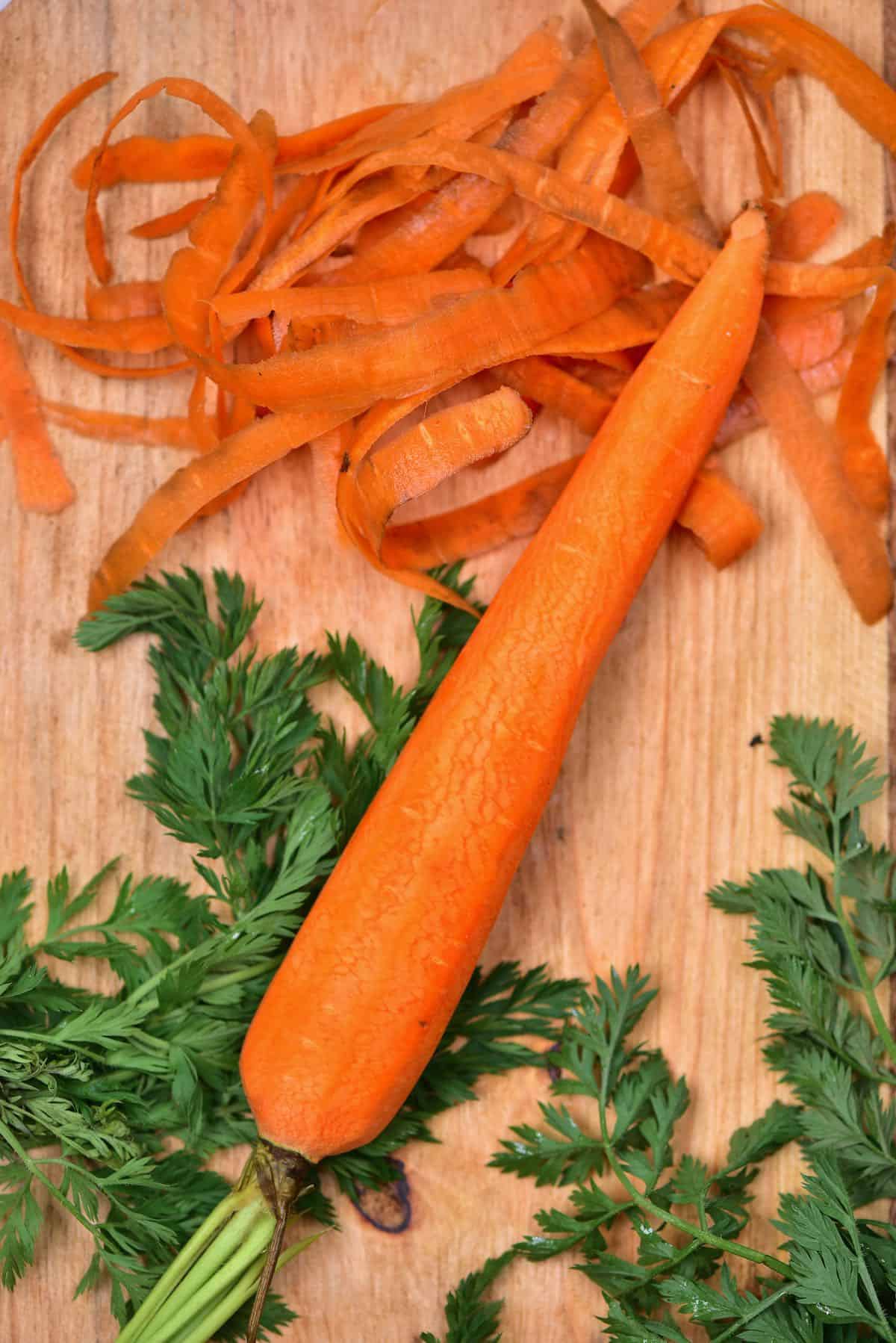
Tip: I clean my carrots immediately after buying them, so I don’t have to do this each time I want to use some. Then I just give them a quick few seconds rinse before using.
Chop the carrots to a size that fits your juicer chute and then begin to feed the carrots through the chute.
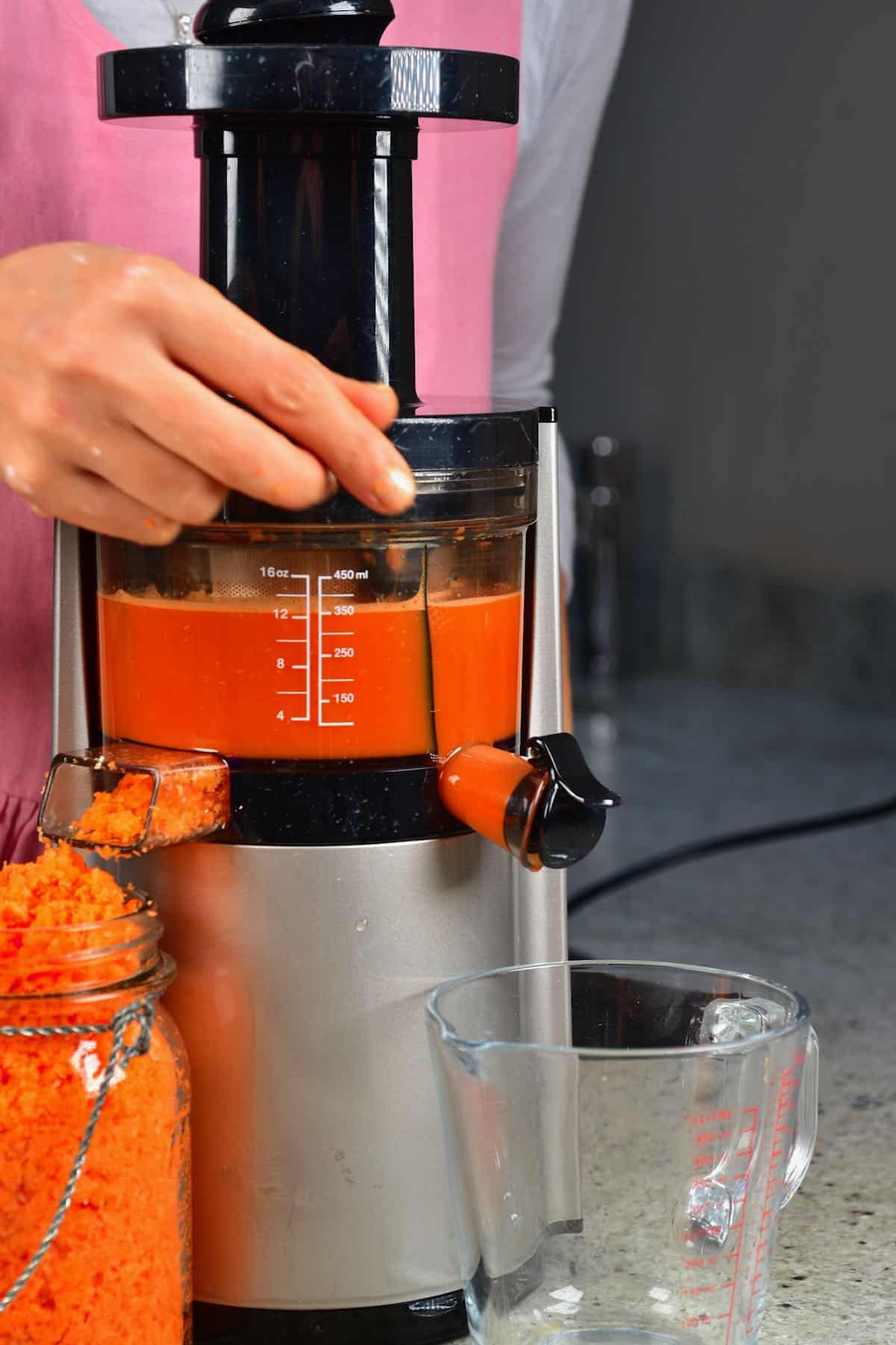
How to make carrot juice in a blender
You’ll need a high-speed blender for this, to easily break up the tough carrot pieces. Peel and chop the carrots into 1-2″ pieces, then add around 1/4-1/2 cup of water to the blender too (to help the carrots blend without diluting the juice TOO much).
Blend it until pureed into a thick smoothie consistency.
Then sieve the juice. You can do this through a sieve, using a spoon to help press the juice out. Alternatively, use a nut milk bag and lightly squeeze it to get the juice out. Enjoy!
How To Use The Pulp & Carrot Tops
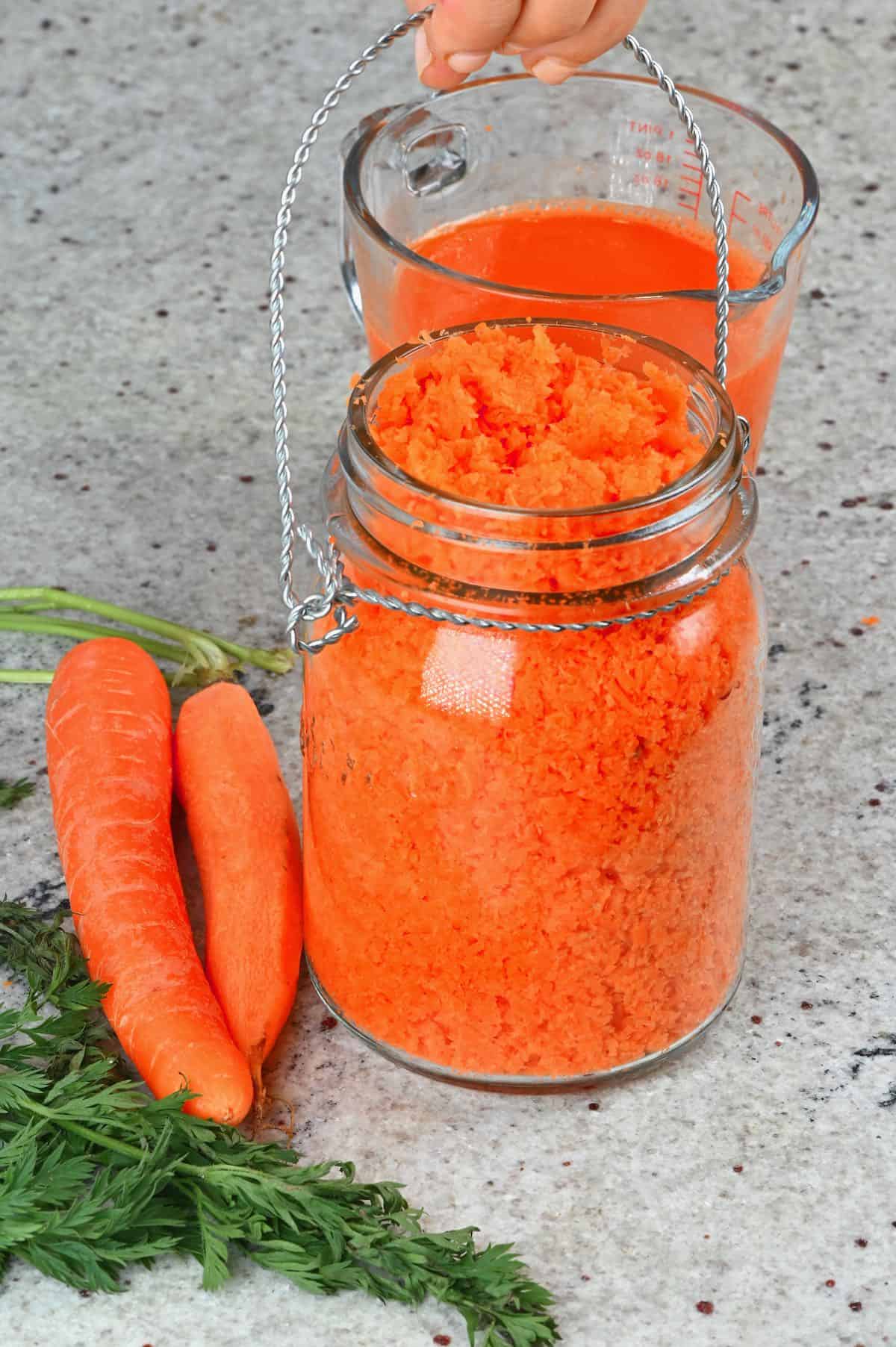
Don’t throw away the leftover fibrous juice pulp. Instead, add it to smoothies, baked goods (like carrot cake and muffins or crackers), broths, carrot salads, breakfast dishes like these carrot cake overnight oats, and other drink recipes.
If you used carrots with tops (leaves), then you can make carrot-top pesto.
The pulp is also freezable to use over a longer period of time.
How to store
Carrot juice is best consumed immediately for the highest amount of nutrients. Though you can store leftover juice in an airtight container in the fridge for up to two days if needed.
Recipe notes
- You can freeze carrot juice – though it separates when thawing so then it is best used for culinary uses like dressings and stocks.
- For extra flavor and nutrients, you could experiment with different add-ins. Celery, cucumber, lemon/lime, apple, orange, pineapple juices would all complement the carrot well.
- You can also add herbs or spices like basil, mint, parsley, cinnamon, or cayenne pepper.
- Because of the high level of carotenoids in carrots, if you drink too much carrot juice, it can affect skin pigment and turn you orange! So I wouldn’t drink it daily.
- Check below for a couple of simple blends, including carrot and orange, and carrot and ginger juice.
More juice recipes
If you try this homemade carrot juice recipe, let me know your thoughts and any questions in the comments. Also, feel free to tag me in your recreations @AlphaFoodie.
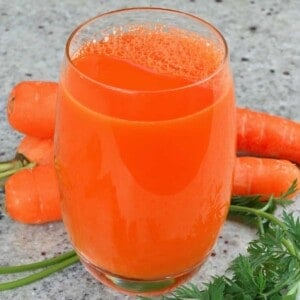
How to Juice Carrots
Equipment
Ingredients
- 2.5 pounds carrots
Instructions
How to make carrot juice with a juicer
- Scrub/clean the outside of your carrots well. If you're using organic carrots you can leave them unpeeled, otherwise, peel them. Either way, peeled carrot juice will be brighter and sweeter.Tip: I clean my carrots immediately after buying them, so I don't have to do this each time I want to use some. Then I just give them a quick few seconds rinse before using.
- Chop the carrots to a size that fits your juicer chute and then begin to feed the carrots through the chute.
How to make carrot juice in a blender
- You'll need a high-speed blender for this, to easily break up the tough carrot pieces. Peel and chop the carrots into 1-2" pieces, then add around 1/4-1/2 cup of water to the blender too (to help the carrots blend without diluting the juice TOO much).
- Blend it until pureed into a thick smoothie consistency.
- Then sieve the juice. You can do this through a sieve, using a spoon to help press the juice out. Alternatively, use a nut milk bag and lightly squeeze it to get the juice out. Enjoy!
How To Store
- Carrot juice is best consumed immediately for the highest amount of nutrients. Though you can store leftover carrot juice in an airtight container in the fridge for up to two days if needed.
Video
Notes
Nutrition
Nutrition information is automatically calculated, so should only be used as an approximation.

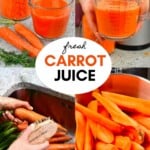
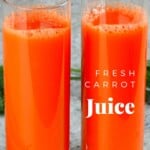

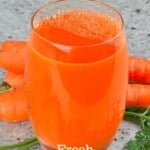









Thanks easy to follow
Glad you liked it, Janice!
I am making my carrot juice❣
thank you for sharing your knowledge and experience with us novices. i am veggie-stupid but learning. thanks also for the tip about the results of drinking too much carrot juice, like many beginners, i would have over indulged and, with my weight, ended up looking like a pumpkin. {8D>
Thank you for your comment, Aaron 🙂